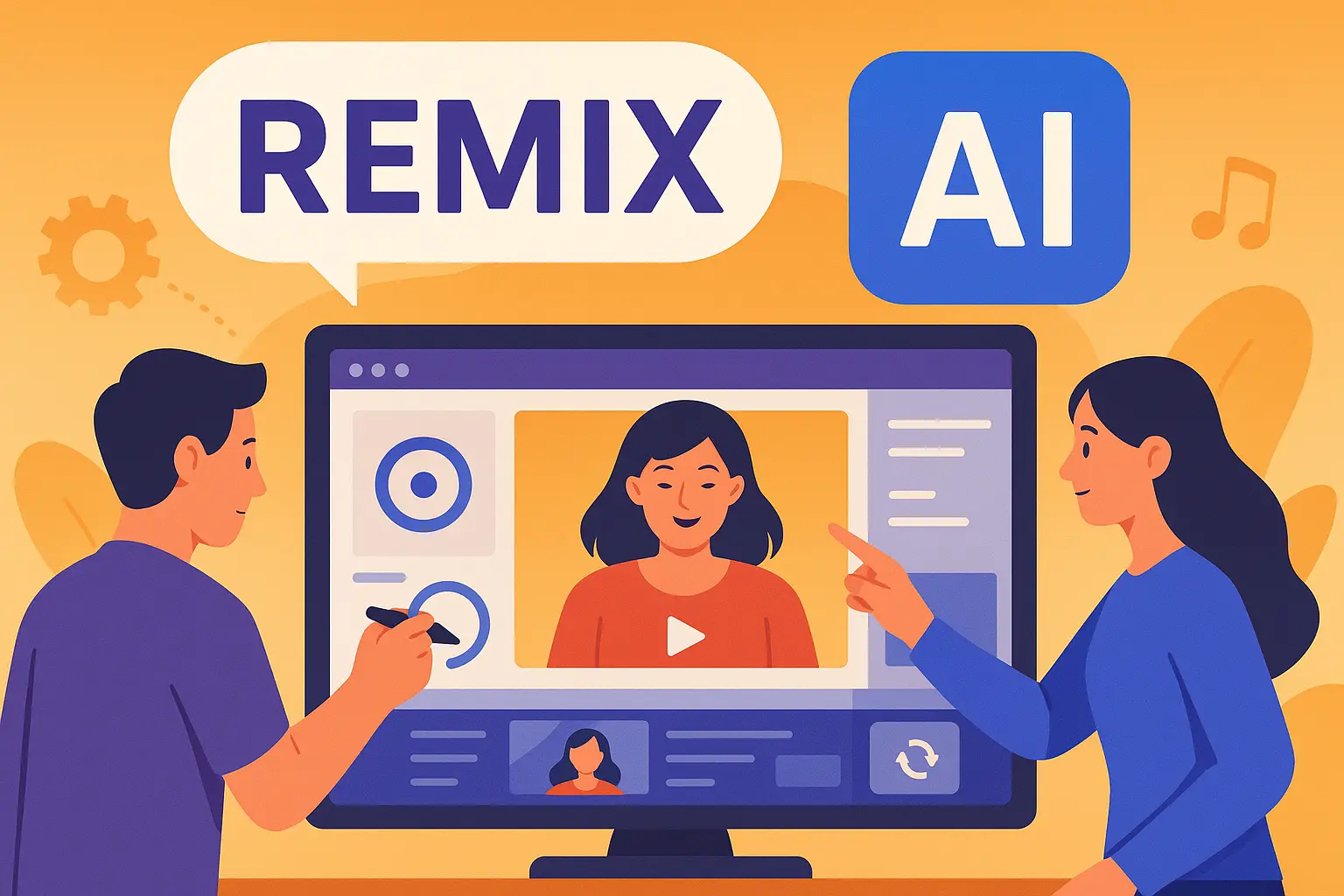- Blog | Sora 2 Video Generator
- Beyond the Prompt: How Sora 2’s “Remix” Function Redefines AI Video Editing
Beyond the Prompt: How Sora 2’s “Remix” Function Redefines AI Video Editing

For the past year, the conversation around AI video generation has been almost entirely focused on the "magic" of the initial prompt. We’ve all seen it: type a sentence, get a video. While magical, this "one-shot" process has always been a creative lottery. You get what the AI gives you, and if it’s 90% perfect, that last 10%—the wrong character expression, the off-brand color palette, the jarring cut—is a creative dead end. You’re forced to re-roll the dice and hope for a better outcome.
With the launch of OpenAI’s Sora 2, this paradigm is officially over.
While the headlines may focus on the new synchronized audio or the stunningly precise physics, the real revolution isn't just in generation; it's in iteration. Sora 2 introduces a suite of features under the umbrella concept of "Remix," transforming the tool from a simple generator into a dynamic, AI-native video editor.
This "Remix" functionality is the bridge between raw AI creation and true directorial control. It’s a fundamental shift in our relationship with generative models, moving us from passive "prompters" to active "creators." Let’s explore what this new workflow looks like.
What is "Remix"? It's Not Your Typical Editing Suite
First, let's clarify what "Remix" is not. It’s not a replacement for Adobe Premiere or DaVinci Resolve. You won’t be manually adjusting keyframes or color-grading with curves.
Instead, "Remix" is a set of semantic, prompt-driven editing capabilities that allow you to take an existing video clip and modify it, combine it, or completely transform it. It’s an iterative loop. You generate a base, then "remix" it, then "remix" the remix. This process is built on three groundbreaking pillars.
1. The "Vibe Shift": Iterative Re-Prompting
This is the most direct form of "Remix." It’s the ability to take a video you’ve already generated and apply a new prompt to it.
Imagine you’ve generated a clip: “A golden retriever plays fetch in a sunny park.” It’s perfect, but you have a new idea. With the Remix (re-prompting) feature, you can take that clip and apply a new layer of instructions:
- Original: “A golden retriever plays fetch in a sunny park.”
- Remix 1: “...make it a cyberpunk city at night with neon rain.”
- Remix 2: “...change the style to 1950s black-and-white film noir.”
- Remix 3: “...turn the golden retriever into a robotic dog.”
Sora 2 understands the core action and physics of the original clip (the dog, the ball, the act of fetching) and intelligently re-renders the entire scene to match the new aesthetic or content.
This "vibe shifting" is a game-changer for creative agencies and marketers. It allows for rapid A/B testing of visual styles for an ad campaign without having to re-shoot or re-animate anything. It’s the end of the “one-shot” lottery and the beginning of true creative exploration.
2. The Killer App: "Character Cameos"
This is, without a doubt, the most significant leap forward. The biggest failure of all previous video models was narrative consistency. You could generate a "man in a red jacket," but the next scene would feature a slightly different man in a slightly different jacket.
Sora 2’s "Character Cameo" feature, a core part of its Remix toolkit, solves this completely.
You can now "create" a character from a short video clip or even a still image. This character is then saved (similar to a digital asset) and can be "tagged" in any future prompt.
For example, you can upload a video of your specific pet cat, "Fluffy." Once Sora 2 processes Fluffy, you can generate entirely new videos:
- “
@Fluffysleeping on a pile of gold coins like a dragon.” - “A wide shot of the Eiffel Tower with
@Fluffysitting in the foreground.”
The model will generate these new scenes with your specific cat. This feature opens the door for consistent brand mascots, recurring characters in a short film, or even placing yourself and your friends into fantastical scenarios. This isn't just generation; it's virtual casting.
3. Narrative Weaving: "Stitching" Clips Together
Finally, "Remix" addresses the challenge of long-form content. Sora 2 can "Stitch" two separate video clips together.
This is far more advanced than a simple "jump cut." When you ask Sora 2 to stitch Clip A (e.g., "A woman walks up to a mysterious wooden door") and Clip B (e.g., "The interior of a vast, futuristic library"), the AI doesn't just place them back-to-back. It generates a new, seamless transition that logically bridges the two. The door might swing open, and the camera moves through it, transitioning the environment from the wooden exterior to the library interior in one fluid motion.
This allows creators to build scenes and sequences, weaving together disparate ideas into a coherent narrative.
The New Creative Workflow
Reading about these features is one thing, but understanding their impact on the creative process is another. The "Remix" concept fundamentally changes the workflow from a linear "Prompt -> Output" model to a cyclical "Prompt -> Output -> Remix -> Remix -> Final" loop.
This iterative power is what will define the next generation of content. The ability to blend, modify, and direct AI-generated content in real-time is the missing link for professional adoption. For those looking to get hands-on and explore what this AI-driven video editing feels like, the emerging tools built on Sora 2 AI are the best place to start. While many official platforms are still gated by long waitlists, you can experience this new workflow directly on their site, no invitation code required. Experiencing this firsthand is the only way to truly grasp the power shift.
We are moving past the novelty phase of AI video and into its utility phase. Sora 2’s Remix features are the engine of that transition, finally giving the keys to the creator.
